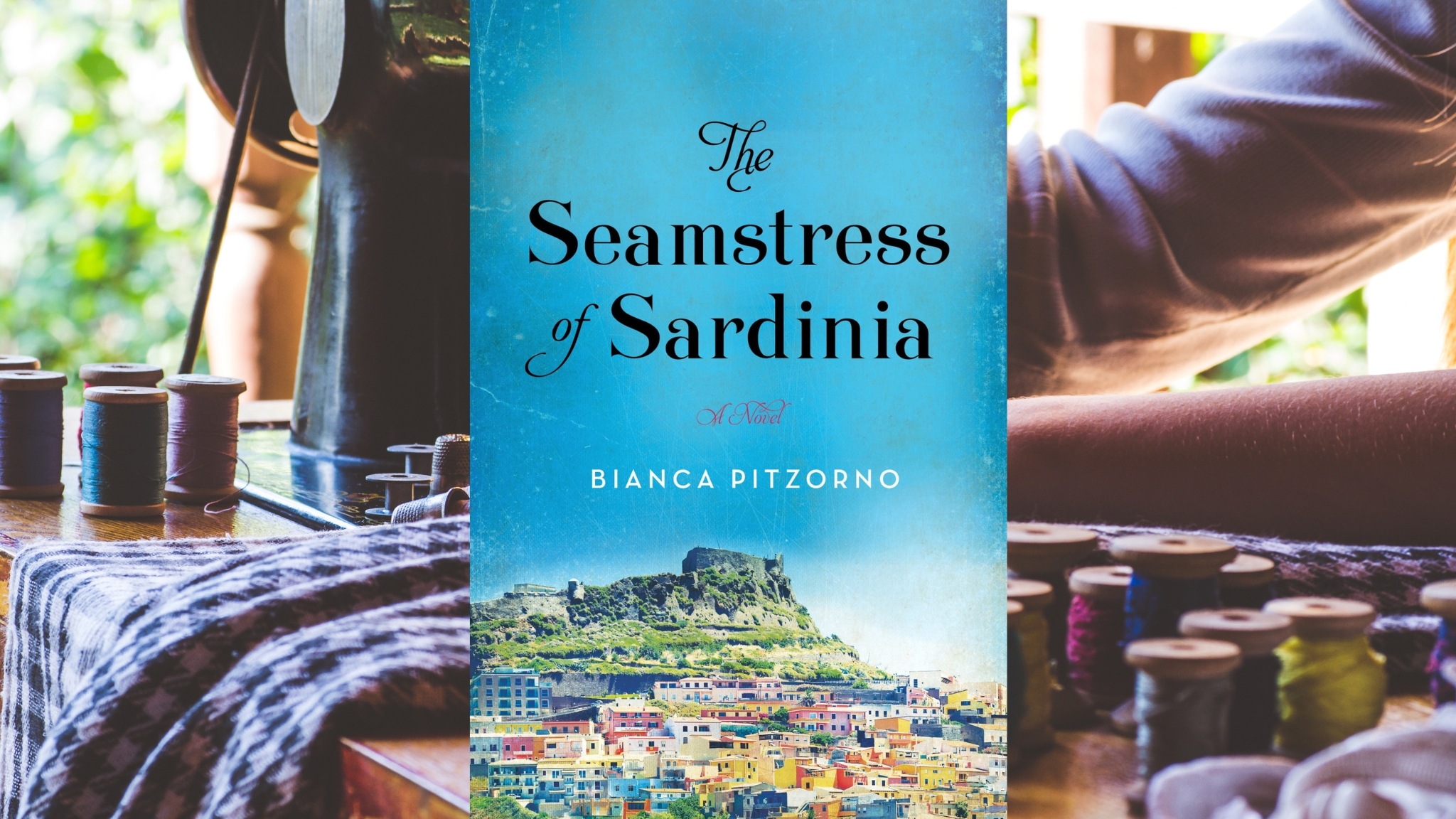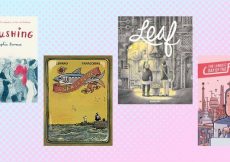The Seamstress of Sardinia by Bianca Pitzorno
What’s it About?
In 1900 Sardinia, a young woman’s remarkable talent with a needle earns her a position as a seamstress with a wealthy family. Inside this privileged world far different from her own humble beginnings, the skilled sewer quietly takes measurements, sketches designs, mends hems — and in the silence, hears whispered secrets and stories of all those around her.
The Seamstress of Sardinia (Harper Perennial)is a lovely dream of a book, soothing, pleasant and welcome in a complicated world often filled with obligations and stress. It is not an inconsequential novel.
It chronicles the emancipation and independence of a modest peasant girl into a resilient, self-educated young woman more than capable to think for herself, behave accordingly and act in her own self-interest. The drama of village life blended with a comedy of manners is reminiscent of the best of English Regency-era novels as vividly imagined and written with the zest of contemporary works by Adriana Trigiani.
Bianca Pitzorno,an accomplished Milanese author, is being introduced to an English-speaking audience for the first time through a deft translation by Brigid Maher who is a senior lecturer in Italian Studies at La Trobe University in Melbourne, Australia.
Bianca Pitzornois a prolific, best-selling author of over 70 adult and children’s books who has sold over two million copies in her native Italy. After reading The Seamstress of Sardinia, this reader hopes more of her back catalog will be translated and published here.
Follows a Seamstress in an Italian Villiage
The setting is a tiny Italian village in Sardinia, the second largest island in the western Mediterranean Sea. It is closer to Corsica, a possession of France, than it is to Italy and roughly equidistance to North Africa which are each about 120 miles away. The remoteness of the island community kept it from developing rapidly and helped the society retain its rigid wealth and class-based stratification for longer than in mainland Italy.
The story begins at the beginning of the 20th century and continues through the use of an epilogue to some years beyond WWII. The author has chosen not to name the central character who narrates the vivid, engaging and often humorous stories beginning with her early childhood memories.
She is a “sartina”, a little seamstress, self-employed, contracted by day or by job to mend or sew by hand simple, everyday items such as bedding, children’s attire, school uniforms, undergarments and less often for women’s elaborate clothing. Hand-cranked sewing or foot pedal-operated treadle machines were available but costly and thus remained but an aspiration for these humble seamstresses.
Depending on the job and the arrangements made, the sartinas would sew some items at home or work in a client’s residence. It was a skilled, respectable trade that provided income as well as independence. In a village where a good reputation was of paramount importance and gossip rife, success was dependent on quality of workmanship, referrals from past customers and maintenance of a sterling character.
Their working hours were long if a commission was large or the deadline short. They would usually be provided a simple lunch, consumed with the servants, and paid in cash upon completion.
In this era, there were few department stores where readymade goods would be sold. The wealthy, upper-class women might shop in Turin, Rome or Milan, or even in Paris for couture items.
In this village, there were two dressmakers who had their own shops where they made fashionable attire for the wives and daughters of affluent business owners. The men had clothing made by tailors as sartinas only worked with female customers.
After WWII and during the succeeding lean years the seamstresses were kept busy making over, mending and recycling clients’ old clothing. It wasn’t long before the economy improved and low-cost, factory manufactured ready-to-wear began to appear in shops and department stores and the profession of sartina ended.
Childhood Lessons from Nonna Remembered
In the epilogue, our heroine tells the reader she has been persuaded by a grandchild to tell her stories lest they be forgotten, much to the pleasure of the readers of The Seamstress of Sardinia.
When she was five, the protagonist and her beloved 52-year-old grandmother, Nonna, were the only members of a large, extended family to miraculously survive a cholera epidemic. It would have been easier for Nonna to have chosen to place her grandchild in an orphanage run by nuns and gone into domestic service than to continue to work as a seamstress but she was devoted to this little survivor.
From an early age, the child was taught her trade. Nonna sewed well and could do intricate embroidery. Her specialty was bedding and curtains but also made clothing, including men’s shirts, baby clothes, evening wear and coats and jackets.
The little girl watched and helped her when she worked at home and accompanied her to jobs in customers’ houses, sitting quietly, observing and learning. Nonna was up before dawn daily to work two and a half hours scrubbing the entrance and four flights of stairs for the landlady in exchange for rent.
The child learned that respect, reliability, honesty, and cleanliness were as important to clients as skill. She also quickly absorbed that a family’s confidences and secrets were as sacrosanct to a sartina as confession was to a priest and it was imprudent to gossip or carry tales.
Growing into an Independent Woman
She was little more than a child when her overworked grandmother died suddenly of a heart attack but she was able to persuade the authorities to allow her to continue to live independently working as a seamstress. Her charm, gentle demeanor and eagerness to please gained her friends among the clients. Nonna had been illiterate and wanting more for the child had arranged for her to learn to read and write. This little seamstress was intelligent, observant and ambitious.
Through her eyes, we learn about the villagers and all aspects of their lives, good and ill. We watch the child grow into a kind-hearted, modest, independent young woman. She consistently honed her sewing and design skills and expanded her customer base after receiving a portable hand-cranked sewing machine from a former client and now friend.
Once introduced to the public library, she continually read and studied subjects that interested her. She loved opera although she could only occasionally afford the cheapest, uppermost seats and eventually found time for romance.
The Seamstress of Sardinia was an absolute joy to read and I hope will become a favorite selection with book clubs. Bianca Pitzorno wrote that while the stories and characters in the novel are fiction, the ideas for the chapters originated from recollections and anecdotes told to her by her grandmother.
It was written in memory and honor of three women she knew from childhood who were seamstresses who worked for the family and patiently showed her how to sew and for her grandmother who taught her many lessons as well.
About Bianca Pitzorno:
Born in Sassari, Bianca Pitzorno lives and works in Milan. Much loved by young readers, she has published over forty books for children and young people since 1970, many of them bestsellers. Today Bianca Pitzorno is considered Italy’s foremost children’s writer, and her novels have been translated into numerous languages. She is well-known in Italy as a writer who usually focuses on female characters with complex personalities. While her books often have comic elements they are also often focused on issues of politics and social class.

Publish Date: 12/6/2022
Genre: Fiction, Historical Fiction
Author: Bianca Pitzorno
Page Count: 304 pages
Publisher: Harper Perennial
ISBN: 9780063271692




























:quality(85):upscale()/2023/05/11/976/n/1922564/782262e2645d6b967847b4.74342194_.png)








